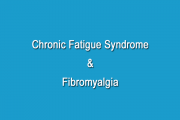Could Lead Be Behind Your Memory Problems And Fatigue?
It has been restricted in so many household products for so many years that many of us may have forgotten about negative health effects of lead exposure. Lead is especially damaging to children under the age of six, whose bodies are still developing and it has been shown to cause nervous system damage, stunted growth, kidney damage, and delayed development. This is exactly why the UK banned lead-based paints in 1992.
Much as these measures are now protecting our children, what about those of us that were exposed to lead prior to this date… Those who are, let’s say, in their 60s or older… Can their health still be affected by lead exposure?
Not the usual suspect
Much as a lot has been written about the toxic effects of lead in children, these effects get much less attention in adults.
As we age, lead is stored in bones. Over the past decade, researchers have found that bones release lead into the bloodstream along with calcium. Three events prompt this release: pregnancy, menopause, and ageing.
The phase-out of leaded petrol, paints and other household products showed a decline in lead blood levels among children and women of childbearing age. But many of us grew up long before these products were banned… The bad news is that lead stored in our bones still poses dangers.
Here’s a list of health risks associated with lead exposure. Notice how many of them are conditions we typically associate with ageing.
- Fatigue
- Joint and muscle aches
- Anaemia
- Memory and learning difficulties
- Reduced cognitive function
- Difficulty sleeping
- Impaired motor skills
- Decreased sexual drive
- Decreased sperm production
- High blood pressure
- Loss of appetite
- Constipation
- Stomach cramps
- Nausea
- Increased risk of miscarriage
- Behavioural problems
Okay, that’s the bad news.
Here’s the good: calcium supplements reduce calcium leaching from bones. And calcium supplements also happen to reduce lead leaching. Research shows that a daily dose of 1,200mg of calcium significantly lowers blood levels of lead in nursing mothers.
There’s just one catch. If you live in the US, some calcium supplements contain lead.
A US Pharmacopeia (USP) symbol on the label indicates that a calcium supplement is lead-free. But not all lead-free products carry the symbol, because it’s voluntary. This can be a little confusing, but I found two lead-free brands of calcium: Citracal and Nature Made. Both are available at health food stores or online.
If you decide to supplement with calcium to improve your bone health and to lower your blood lead levels, combine your calcium intake with magnesium and vitamin D to get the maximum benefits. Calcium supplements should be taken in divided doses (eg, in the morning and evening), because dosages above 500mg are not absorbed as well as smaller doses.
Did you find this information useful?
Then why not get more expert health recommendations just like this delivered direct to your inbox?
"It is truly refreshing to read a newsletter on the topic of alternative medicine which is scientifically based and reviewed by professionals..." - Robert Sinott
We respect your privacy and will never share your details with anyone else.Disclaimer: Bear in mind the material contained in this article is provided for information purposes only. We are not addressing anyone’s personal situation. Please consult with your own physician before acting on any recommendations contained herein.
Sources:
“Where Does Lead Go? Into Bones” Liz Szabo, USA Today, 10/30/07, usatoday.com
“Lead – Health Effects” Occupational Safety and Health Administration, osha.gov
“Melons: Safe Handling Practices for Consumers” Amy Simonne, Institute of Food and Agricultural Sciences, University of Florida, edi s.ifas.ufl.edu










